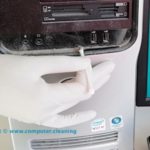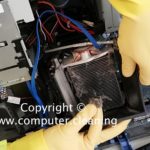There is growing context to apply scientific knowledge and methods to develop “cleaner technologies” so that the natural resources and energy are used efficiently and in such a way waste generation can be minimized that the environment is protected from harmful effects of resulting pollution. Industries are engaged in evolving cleaner technology or eco-friendly technology based on improved manufacturing methods that require less raw materials and energy to produce more and even better quality goods and services. Cleaner technology uses raw material efficiently and reduces the quality and quantity of waste itself.
Industrial revolution resulted in the production of a large number of goods and services for the convenience of people. Life became much easier and comfortable. But large-scale industrial production resulted in the accumulation of huge amounts of wastes, which in turn created pollution of air, water, land and adversely affected plant and animal life. The environment of earth is loaded with wastes much beyond its carrying capacity. The volume of waste and out of service goods and gadgets overloaded and pollution must be controlled in order to provide a healthy environment for man and other animals.
The Concept of Cleaner Technologies
Generation of enormous amounts of wastes has caused an alarming situation threating human wellbeing. Cleaner technology is using technology in industries in such a way that the environment is protected from the harmful effects of waste accumulation and the resulting pollution. This led environmentalists, scientists and technologists to think seriously about cleaning the environment by reducing industrial and other types of wastes. The aim is to make industrial manufacturing processes cleaner and more sustainable by redesigning them taking clues from nature, that is, how nature deals with wastes. In nature, waste or the leftover of one organism becomes the food of another organism, so that nutrients of the earth are endlessly recycled.
• One way to emulate nature is to recycle and reuse the chemicals used in industries instead of dumping them into the environment.
• Industries may interact in such a way that they establish a “resource exchange” programme in which waste of one industry or manufacturer is utilized as raw material by another-industry- similar to food web in nature.
• Use of CNG by automobiles instead of petrol, as an automobile fuel, is an example of a cleaner technology which has reduced pollution of the environment.
• Instead of throwaway economy which creates huge amount of waste, the manufacturers can make more money if their product is redesigned so that it uses minimum amount of raw
materials lasts longer, easy to maintain, repair, remanufacture, reuse or recycle e.g. ‘Carrier’ a leading manufacturer of air-conditioning equipment are very efficient, easy to repair, remanufacture and recycle.
• Detoxifying hazardous wastes by chemical and biological methods to reduce their toxicity.
• Bioremediation is the process in which a living organism (plant/animal/bacteria) is deployed to make a hazardous waste harmless. For example bacteria and enzymes help to destroy toxic and hazardous substances or convert them into harmless compounds.
Various plants have been identified which can help to clean up soil and water contaminated with chemicals such as pesticides, organic solvents, radioactive matter and toxic metals such as lead, mercury and arsenic. The concept of cleaner technology is being practised in different parts of the world under various names such as low and non-waste technologies, environmentally sound technologies, waste recycling, residue utilization and resource recovery technologies. However ultimate cleaner technologies will be based on renewable resources as raw material and energy and transformation through highly efficient biotechnologies to produce environmentally harmless products.
Various plants have been identified which can help to clean up soil and water contaminated with chemicals such as pesticides, organic solvents, radioactive matter and toxic metals
such as lead, mercury and arsenic.
The concept of cleaner technology is being practised in different parts of the world under various names such as low and non-waste technologies, environmentally sound technologies, waste recycling, residue utilization and resource recovery technologies.
However ultimate cleaner technologies will be based on renewable resources as raw material and energy and transformation through highly efficient biotechnologies to produce environmentally harmless products.
Related Topics:
Methods for Reducing, Recycling, and Reuse of Wastes
Nuclear Hazards, Their Causes, Prevention and Control
Safe Disposal of Nuclear Wastes
Life Cycle Analysis OR Life Cycle Assessment





